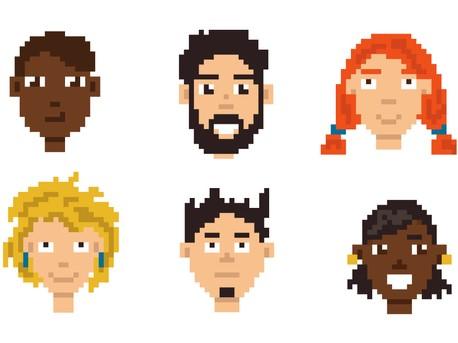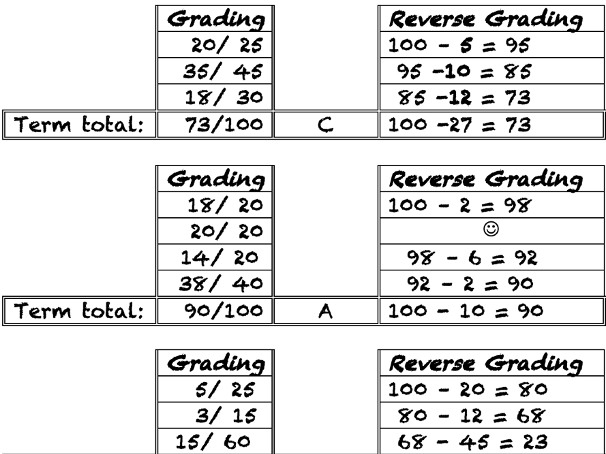For years, tests, essays and other forms of writing have been the main assessment tools for evaluating whether students have achieved set learning objectives and developed necessary competencies. However, we can break away from such conservative and outdated means of assessment.
Evaluation is, without doubt, a crucial element of the teaching process, but often, as teachers, it can be easy to get stuck in an evaluation routine. Instead, students can demonstrate their learning through innovative methods that engage them in the teaching-learning process without sacrificing the effectiveness of good assessment.
Here are 10 options that can be used to give a creative twist to your class:
Video TEDTalk
Students deliver the video script, which includes an introduction to the topic, proposed solution/s and personal conclusions, as well as presenting content with data supported by bibliographic sources. Students make the video and are evaluated on their stage performance and skills such as oral communication – which are essential in today’s job market regardless of the chosen career.
- How to design low-stakes authentic assessment that promotes academic integrity
- Assessment and feedback as an active dialogue between tutors and students
- How data from digital learning tools can refine teaching
Podcast
In this format, students can record audio content individually or collaboratively and speak as experts on a specific topic in order to demonstrate knowledge of the subject and other transversal competencies. Anchor is a particularly useful tool for developing podcasts.
Poster gallery
Students work together to create a poster on an in-class topic and share it in immersive spaces such as Virbela or Mozilla Hubs. The team exhibits their poster in front of classmates as they arrive, and they must also visit the other teams’ spaces. A closing of the virtual event is also organised, in which the teacher delivers a final message. These experiences can truly revolutionise the classic classroom presentation, adding a sense of immersion and making it feel “more real” for students.
Elevator pitch
Here, a creative speech of up to three minutes at most should be developed, with students encouraged to tell a story and engage their audience via an introduction, plus presenting the problem, solution and value proposition, as well as a call to action. This activity can work particularly well with topics such as negotiations and sales.
Comic
Asking students to create a comic gives them the opportunity to share knowledge acquired in the course using a different and interesting form of narrative, individually or collaboratively, while working on storytelling skills. Pixton is an application that is very useful for creating comics.
Escape room
Try designing a problem-based learning game where students are immersed in a topic by being required to decipher riddles to solve a challenge, exploit their environment and find the solution to obtain a reward. Genially and Mozilla Hubs are two applications used to develop escape rooms.
Role play
This is not a new evaluation idea, but by asking students to take part in a role-play activity, the teacher can observe and check the learning achieved and the students’ ability to respond immediately to an environment. We invite you to do it, as we did, in an educational metaverse such as Virbela, to give the exercise a greater sense of immersion via avatar customisation and simulated environments. We use these activities often in human talent management courses.
TikTok
This popular social media tool allows students to record audio and video content individually or collaboratively as experts presenting solutions to problems, or to share and interact with teachers, experts and classmates, meaning it can also be a useful platform for peer evaluation.
Minecraft
With Minecraft (Education Edition), the teacher can create a virtual world of their own or ask students to be the creators and “play” by solving challenges and problems in a simulated professional environment.
Virtual reality
Virtual reality can be used to foster and assess learning by allowing students to have experiences that would be difficult to replicate or create in the classroom otherwise for a variety of reasons, including time, distance and finance. We have used it in the health sciences field and international negotiation courses so that students can experience other cultures via personalised avatars and interactions.
Evaluation is, of course, much more than simply grading. And much of the interest and variation lies in how we apply it to encourage students to participate in the teaching and learning process. Technology is certainly an enabler that can help us offer attractive evaluation options to our students – we invite you to embrace new methods to help make your students’ learning more enjoyable and equitable than ever.
Monica Francesca Contrino is a professor and academic coordinator for the Business School of Digital Education, and Rocío Elizabeth Cortez Márquez is a professor and academic coordinator, both at Monterrey Institute of Technology, Mexico.
If you found this interesting and want advice and insight from academics and university staff delivered direct to your inbox each week, sign up for the THE Campus newsletter.
Do you work in US higher education? Join us in Los Angeles at THE Campus Live US on 9-10 November where we will unite academics and senior administrators from institutions across the country to discuss how to take on the sector’s shared challenges. Register to join




comment